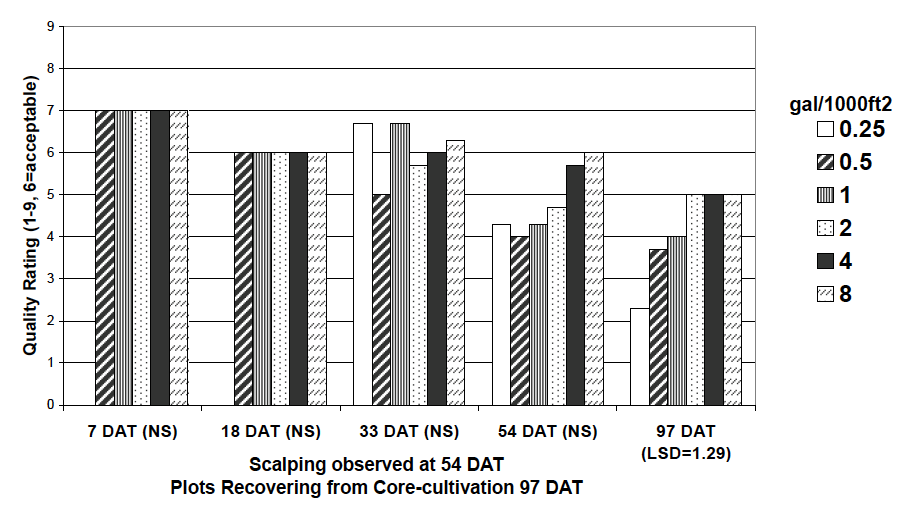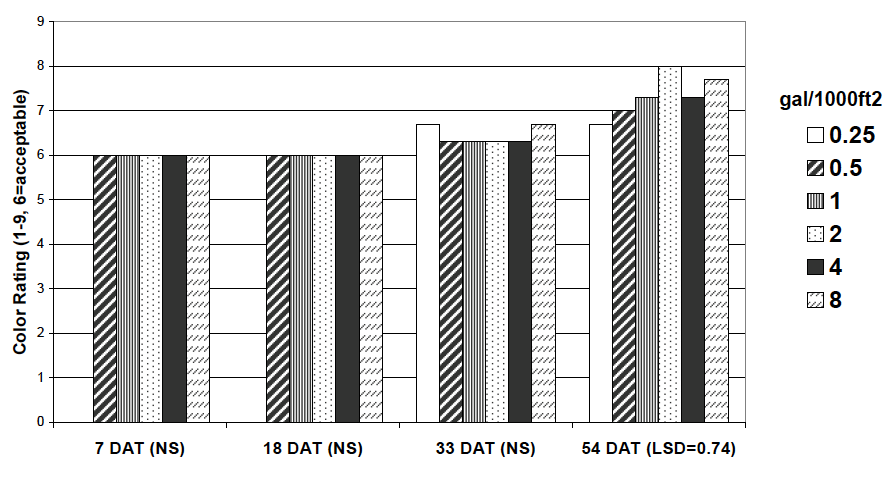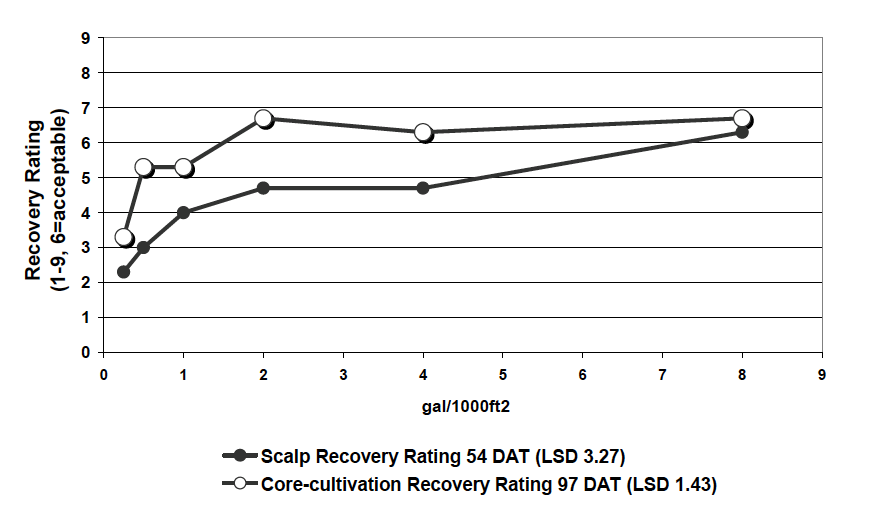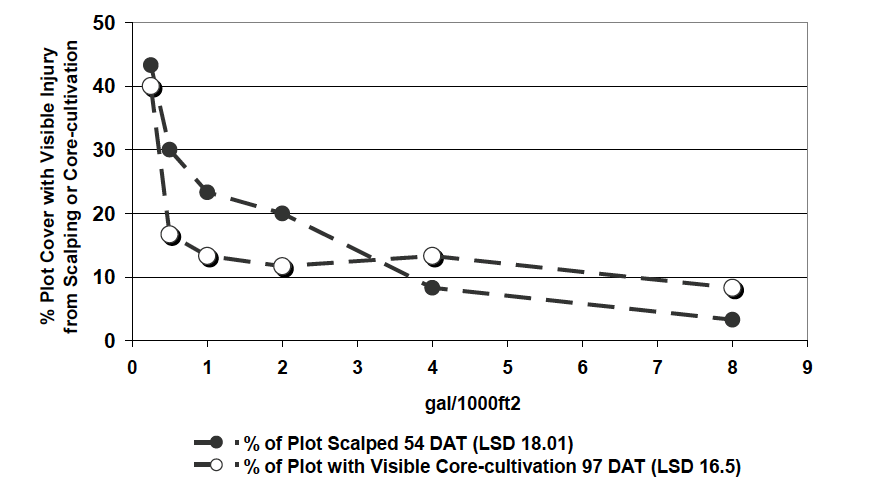Evaluation of Spray Volume Requirement for Optimal Foliar Applications
Evaluation of Spray Volume Requirement for Optimal Foliar Applications R.E. Gaussoin and R.M. Goss
Research was conducted in 2004 at the John Seaton Anderson Turf and Ornamental Research Center near Mead, NE to determine optimum spray volume for application of foliar-applied fertilizers. Experiments were performed on a 3-year-old stand of ‘L-93’ creeping bentgrass with a California-style root zone. Plot size was 5’ x 10’ with treatments applied with a CO2 driven backpack sprayer equipped with a 8002V flat-fan nozzle on July 8, 2004. Two applications of GRIGG™ Gary’s Green® were applied at 6 oz/1000ft2 (0.09 lb. N/1000ft2) 2 weeks apart. Two weeks later and every 2 weeks thereafter, Gary’s Green was applied at 12 oz/1000ft2. Higher rates were used because of the a typically slow response of the creeping bentgrass to nutrient applications when grown on California-style greens. Spray volumes were 0.25, 0.5, 1, 2, 4, and 8 gal/1000ft2 (11, 23, 44, 87, 174, and 350 gal/A). Plots were evaluated for color and quality. In late- to mid-September, the green was subjected to scalping from daily mowing. Recovery ratings were taken from the scalping injury. In addition, recovery from a late-September core-cultivation was determined.
Under normal growing conditions, there was no difference in turfgrass quality or color between any spray volumes (Figures 1 and 2). However, when creeping bentgrass was stressed from either scalping or core-cultivation, higher spray volumes provided for improved recovery (Figures 3 and 4). The higher the spray volume, the better the turfgrass quality when the bentgrass was recovering from either scalping or cultivation injury. Applications of both 0.25 and 0.5 gal/1000ft2 resulted in the slowest recovery, while applications of 2, 4 and 8 gal/1000ft2 provided in the best recovery from scalping. A spray volume of 0.25 gal/1000ft2 had significantly less recovery from core-cultivation than the other treatments. No differences were evident in rates above 0.25 gal/1000ft2.
Results from this experiment do not indicate a difference in turfgrass quality or color based on spray volume when conditions are favorable for creeping bentgrass growth. However, there does appear to be a direct relationship between the spray volume and creeping bentgrass recovery from stress. Further research is needed to determine both the mechanism for increased recovery with higher spray volumes and the interaction between timing of application (pre- or post-stress) and spray volume.

Figure 1. GRIGG™ Spray Volume StudyQuality Ratings

Figure 2. GRIGG™ Spray Volume StudyColor Ratings

Figure 3. GRIGG™ Spray Volume StudyRecovery from Scalping and Core-cultivation Ratings

Figure 4. GRIGG™ Spray Volume StudyPercent of Plot with Visible Scalping and Core-cultivation Injury